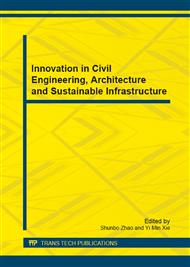p.663
p.666
p.669
p.677
p.684
p.689
p.694
p.697
p.701
Study on Thermal and Structural Behavior of a Cable-Stayed Bridge under Potential Tanker Truck Fires
Abstract:
Bridges are important parts of traffic systems and need to provide the necessary safety for the traveling public. Fire is one of the most severe hazards that bridges may subject to during their lifetime. In recent years, due to rapid development of transportation systems, as well as increasing transport of hazardous materials, bridge fires have become a concern. Bridge fires caused by crashing of vehicles and burning of gasoline are much more severe than building fires and are characterized by a fast heating rate and a higher peak temperature which could lead to bridge collapse. Bridge failures during a fire can result in the disruption of commerce and services, and most importantly the loss of human life. It has become necessary to consider the potential exposure of bridges to flames from oil or liquefied petroleum gas fires. In this paper, potential fire scenarios relevant for a cable-stayed bridge crossing the Yangtze River are analyzed firstly, then the temperature distribution in key elements and the global structural behavior of the bridge under tanker truck fires is calculated by using general purpose finite element analysis software ANSYS. Numerical simulation results demonstrate that cable-stayed bridge may collapse under some specific fire scenarios and it is necessary to consider fire safety in bridge design.
Info:
Periodical:
Pages:
684-688
Citation:
Online since:
November 2012
Authors:
Price:
Сopyright:
© 2012 Trans Tech Publications Ltd. All Rights Reserved
Share:
Citation:


